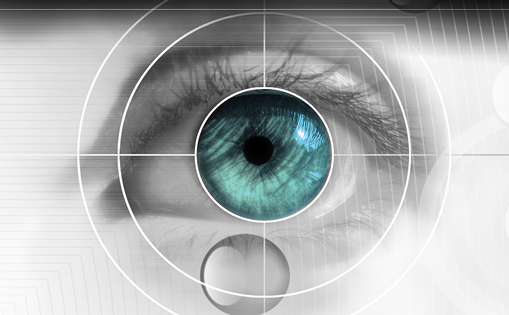Lower-order eye aberrations such as myopia, astigmatism and hyperopia are corrected using conventional laser refractive surgery, with excimer laser refractive surgery being the most common procedure. Excimer laser refractive surgery aims to correct these aberrations by altering the shape of the corneal curvature through the ablation of corneal tissue. It includes three main types of procedures:
- photo-refractive keratectomy (PRK);
- laser epithelial keratomileusis (LASEK); and
- laser in situ keratomileusis (LASIK).
With conventional refractive surgery procedures and early excimer laser systems, it is difficult to prevent or treat higher-order aberrations. It is important to prevent and/or treat these since they may result in night-time driving problems, halos and glare, as well as a general decrease in the quality of vision.1,2
Technological advances over the past decade have led to the development of excimer laser systems with high repetition rates, advanced tracker systems, patient-specific features, etc. The newer systems may help to prevent and/or treat higher-order aberrations, thereby improving the safety and effectiveness of excimer laser refractive surgery.
The aim of this article is to discuss these innovations in excimer laser refractive technology and to focus on the clinical use of the recently introduced WaveLight® EX500 Excimer Laser system (see Figure 1).
Innovations in Excimer Laser Systems
Early excimer systems were associated with concerns about postoperative complications, such as night-time driving problems, glare and halos. These concerns led to several features of these systems being modified, such as the diameter of the treatment zones, ablation profiles and laser head. The early systems used small ablation zones (4.0–5.0mm),3,4 which led to incidences of haze, glare and halos. Today, laser systems can ablate larger areas to address these concerns.5,6 While the early systems were broad-beamed, however, the newer ones are scanning-spot laser systems with small beam diameters. This is a critical parameter of complex ablation profiles.7,8 In an effort to minimise corneal dehydration during excimer ablation, excimer laser systems now use laser heads with high pulserepetition rates. This may help reduce the length of time that patients need to fix their eyes to a target, thus helping the corneal stroma to remain hydrated.It has been shown that 500Hz excimer lasers can provide ablation quality that is better than slower systems (50 or 200Hz).9 Ablation quality is higher with the faster ablation rate due to a decrease in stromal dehydration and flap shrinkage.10 Laser systems now offer high repetition rates of up to 500Hz.
Higher-order aberrations, such as spherical aberration and coma, are a major concern with excimer laser refractive surgery.11–16 Early excimer laser systems could not effectively treat such aberrations; by contrast, the use of customised ablation profiles by the newer excimer laser systems helps prevent and/or treat higher-order aberrations, thereby improving the quality of vision and effectively reducing night-time driving problems.
Higher-order aberrations are treated using the Wavefront Guided application if validated Wavefront maps can be obtained. With ‘standard’ procedures, the Wavefront-optimised profile is used. Due to the angle of incidence, laser pulses directed to the periphery of the cornea can lose energy and will not be as effective as those directed to the central cornea, resulting in a reduction in the effective peripheral ablation. To compensate for these losses, the Wavefrontoptimised ablation profile fires additional laser pulses at the peripheral areas.
Another example of customised ablations is that of a topographyguided ablation profile, which can help correct irregular astigmatism and decentered ablations.17,18 Topography-guided procedures use corneal topography data to refine the ablation profile. These data can be obtained from the WaveLight Topolyzer (placido disk) or Oculyzer (Scheimpflug image) platforms and the outcomes are similar with both devices.19 Other examples of customised ablation applications include the Wavefront-guided and Custom Q profiles.
Initial Studies with the Wavelight 500Hz Concept System
An initial concept study investigated the utility of an excimer laser system with a repetition rate of 500Hz (the WaveLight Concept System) for wavefront-guided laser-assisted subepithelial keratectomy enhancement.20 The results of this study showed good refractive results, with 90% of the eyes within ± 0.50 D of the intended correction. There were also significant reductions in higher-order aberrations (mean total high-order aberrations decreased from 0.72 ± 0.18μm to 0.47 ± 0.15μm).20 There were no significant haze, intra- or post-operative complications after visual enhancement with this laser system.20 The same laser was also evaluated in a prospective clinical trial for LASIK in patients with myopia or myopic astigmatism.21 The results of this study also found good visual outcomes 12 months after LASIK.Additionally, there were no side effects reported that may be associated with the use of a high repetition rate.21Clinical Experience with the WaveLight EX500 Excimer Laser System
The WaveLight EX500 excimer laser system (see Figure 1) has been used at the Wellington Eye Clinic in Dublin, Ireland, for laser refractive surgery procedures, particularly LASIK and photo-refractive keratectomy. Initial experience at this clinic suggests that it is safe and effective for refractive surgery, with improvements in both patient and physician outcomes. This section discusses the importance of these new features for excimer laser refractive surgery, based on the author’s clinical experience at the Wellington Eye Clinic.
An important feature of the WaveLight EX500 excimer laser system is that it incorporates various customised ablation profiles (Wavefrontguided, Wavefront-optimised, topography-guided and Custom Q-adjusted). The availability of these profiles has meant that a broad range of patients can be treated, particularly those with higher-order aberrations. This ensures that the specific needs of patients are met. The EX500 laser system has a laser head with a high repetition rate of 500Hz and a treatment time of 1.4 seconds per diopter (at a 6.0mm optical zone). The speed of ablation with the EX500 laser makes the overall procedure very efficient, resulting in less patient fixation fatigue and improved patient comfort, as well as reducing the chance of intraoperative stromal dehydration. The speed of the procedure can be further improved with the use of a fast swivel bed that can quickly transition the patients between the excimer and femtosecond lasers.
The EX500 laser system also has a multidimensional 1,050Hz active cyclorotational eye tracker (with a latency time of 2ms) that improves surgical precision. This helps to ensure that the eye maintains the correct position and is immediately recognised by the laser. The precision of the laser surgery is also facilitated by iris registration, which can compensate for cyclorotation as well as centroid pupil shift. Both the speed and precision of laser surgery can be improved with the system’s network connectivity to the Wavelight FS200 femtosecond laser system, to diagnostic devices as well as to the in-office electronic medical records system. It should be noted that the FS200 laser is a femtosecond laser with a 200kHz laser head and is used for creating corneal flaps during refractive surgery. This network connectivity is valuable – in the past, surgeons had to pre-empt the position of the customised ablation when creating a flap; now a flap can be created while monitoring the excimer ablation profile on the femtosecond laser.
The EX500 also has an online optical (‘no-touch’) pachymeter. This allows corneal thickness to be measured pre-operatively, intraoperatively and post-operatively, thereby further enhancing the safety of the LASIK procedure.Limitations of the EX500 Excimer Laser SystemWhile the EX500 excimer laser system can be used for the treatment of a broad range of patients, it should be noted that if a person is not a suitable candidate for excimer laser refractive surgery, the EX500 laser system will not make them suitable for such treatment.
Furthermore, with the customised ablation profiles currently available on the EX500, it is recommended that the cornea is not made steeper than 48 diopters when treating hyperopes and not made flatter than 33 diopters when treating myopes. The degree of corneal steepness or flatness that can be achieved may change in the future with the availability of more advanced ablation profiles.
Conclusions and Future Developments
Innovations in excimer laser technology have led to the introduction of excimer laser systems with enhanced features, such as high repetition rates and customised ablation profiles. This allows the safe and effective treatment of a broad range of patients, including those with higherorder aberrations. Initial clinical experience with a recently introduced 500Hz excimer laser suggests that it has the potential to improve the safety and effectiveness of refractive surgeries and to also potentially enhance patient and physician outcomes. In the near future, excimer laser systems with even higher repetition rates and advanced ablation profiles are expected to be introduced. Initial clinical trials with a 1,000Hz excimer laser system22,23 and those with an advanced ocular modelling ablation profile have shown promising initial results.24







